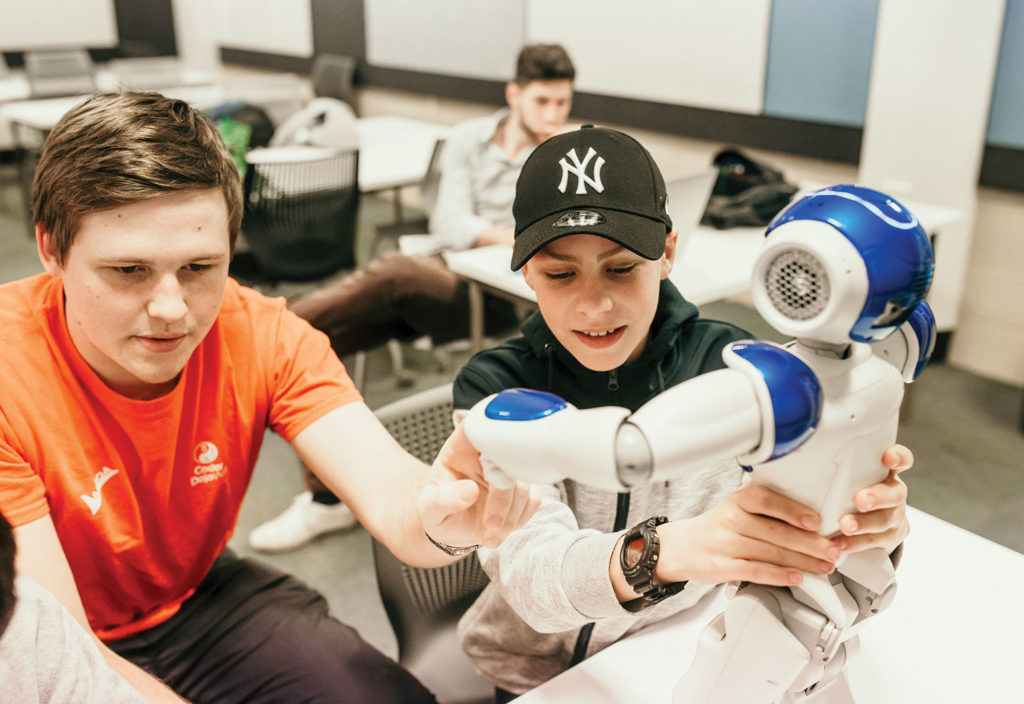Engineers Australia is partnering with a West Australian autism talent hub to bring more neurodiverse people into the engineering workforce.
Five minutes with Curtin University’s Professor Tele Tan and you immediately want to hire someone on the autism spectrum.
“They have tremendous skills in the area of attention to detail,” he enthused.
“They are creative, with out-of-the-box thinking.
“And most of them tend to have very good spatial awareness, which makes them very good at understanding processes in two-dimensional and three-dimensional space.”
Tan is the founder and director of the Autism Academy for Software Quality Assurance, or AASQA.
It is an organisation that aims to unlock the potential of young people on the autism spectrum by providing them with pathways to meaningful employment.

At the same time, it offers a solution for industry to the challenge of attracting specialised information and communications technology talent, particularly in the areas of software testing, data science and cybersecurity.
Tan said AASQA was inspired by Danish company Specialisterne, which uses the strengths of people on the autism spectrum as a competitive advantage.
Despite their unique talents, employment outcomes for people on the spectrum are poor. In Australia, the labour force participation rate for adults with autism spectrum disorder is 42 per cent, compared with 53 per cent for all individuals with disabilities and 83 per cent for people without disabilities.
AASQA hopes to change that, starting with an outreach arm that works with high school students through the CoderDojo coding club. It also has an education and training arm that supports students to undertake professional certifications in software testing while still at school.
AASQA also works with industry to create internships for TAFE and university students on the autism spectrum, helping them transition to the workforce.
“It’s a try-before-you-buy model for companies who want to recruit neurodiverse talent,” Tan said.
AASQA has created 29 internships for people on the spectrum — generally ranging from three to 12 months full-time — and raised $350,000 in the process.
Tan said 100 per cent of the interns have found employment on graduation from the program. One of AASQA’s earliest beneficiaries was Cameron Smith, who discovered the academy while studying electrical engineering and physics at Curtin University.
AASQA supported Smith while completing internships at the Bureau of Meteorology and Deloitte, working in database analysis and programming.
Smith now works at BHP, devising software to help control machines on mine sites.
AASQA is working with Engineers Australia to enable more neurodiverse people to enter careers in engineering.
Tan said simply making it easier to get into university engineering courses through a portfolio entry could increase the diversity of the workforce.
“There’s a barrier, so to speak, for talented individuals that otherwise want to do engineering but [don’t] have the full ATAR qualification,” he said.
Red River Group Chief Executive and Chairman of Engineers Australia’s Western Australia Information, Telecommunications and Electronics Engineering (ITEE) board Robert Williamson saw firsthand the need for talent as managing director of a company that developed software.
“I knew that one of the faults that we had was in software testing,” he said.
“The industry doesn’t have very good software testers; most people that can test software can write software and they get paid more money to write it.”
Williamson has had a paper about the work of AASQA and Engineers Australia accepted at the World Engineers Convention in Melbourne in November.
Tan acknowledged that there are challenges, and AASQA supports businesses who take on interns with workplace modification and job crafting.
He said it is important to clearly communicate the job role, break things down into a simple form and convey any changes in advance. But the payoff is immense.
“The corporate get-back is diversity of thought … and having great quality workers that are able to solve very difficult problems,” Tan said.
“With digital transformation and the workforce of the future, getting the appropriate talent will be a challenge for industry. We’re just asking them to take a look at neurodiverse talent and to create an impact for their businesses.”
Taking the first steps
Electrical engineer Cameron Smith said the Autism Academy for Software Quality Assurance made a big difference in his life, helping him achieve the 480 hours of work experience required to graduate.
“By getting these internships, that went a huge way towards getting all those hours,” Smith said.
“Otherwise I probably would have really struggled.”
The internships also gave Smith his first real experience in the workforce.
“That was huge,” he said.
“It showed me how everything was going to be and what I had to work towards.”
Red River Group Chief Executive Robert Williamson will present at the World Engineers Convention 2019 in Melbourne, 20-22 November. For more information, click here.
This article originally appeared as “Across the spectrum” in the September 2019 issue of create magazine.
